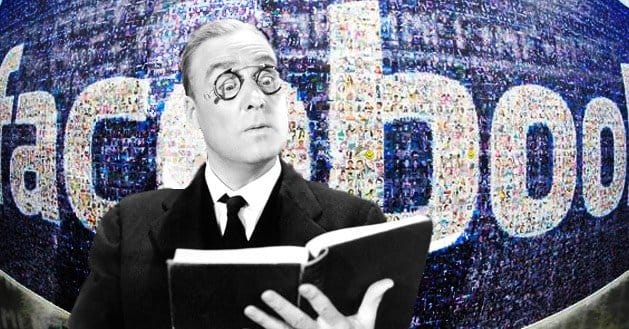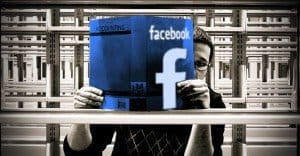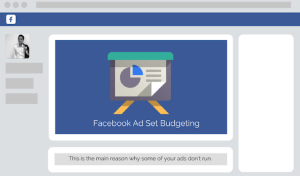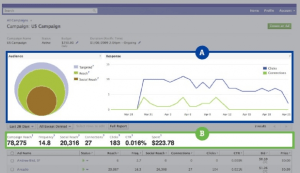 Written by ContentPowered.com
Written by ContentPowered.com
If you’re looking for a detailed plan with budget numbers and precise steps to success, you’re going to be disappointed. Unfortunately, every business is a unique enterprise with a unique audience. Some respond better than others to different sorts of ads. Any budget calculation is going to rely heavily on your own knowledge of your audience and your overall marketing budget. You can run a successful ad campaign on $5 per month, or you can spend $1,000 per week and still pull in a return.
Define your Goals
Before you can begin to set a budget, you need to come up with some idea of what you want to do. What are you paying for? Are you looking to get users to install your app? What about pulling in new followers or converting Facebook followers into email subscribers? How about the big one; bringing users from your Facebook page to your website and getting them to buy your product. You need to know what your goal is before you can even begin assigning a monetary value to them.
Keep in mind that the larger the goal, the more effort it will take to reach it. Additionally, for large goals, you will need more time to reach them. In general, a larger goal will cost more, and it will cost even more if you want it done faster.
Analyze your Presence
What does your current Facebook presence look like? Do you have an existing base of interested customers who may potentially be conversions? If you have a page with 10,000 followers and you want them to join your mailing list, you’re going to have a hard time if you got them to follow you from your mailing list originally. Likewise, you’ll have a hard time selling products to people who already have your products.
You need a robust Facebook presence to succeed with paid marketing. If your audience is particularly disengaged, you need to spend some time sharing content and engaging with them before they’re prepared to accept advertising from your business. Building a community on your page takes a serious time investment.
You can use paid advertising to try to bring in interested new users, but it doesn’t always work. You need to have at least some idea of where to start before you know who to target. Never send out widespread global advertising, hoping to hit anyone you can. Your return on that investment will be nil.
Consider your Industry
It’s a face of Facebook like that some industries have an easier time converting users than others. A company that manufactures pipe fittings is going to have a difficult time finding interested and passionate users on Facebook. Meanwhile a company that sells consumer electronics has a massive, wide audience already waiting. On the other hand, anyone who does engage with the pipe fitting manufacturer is likely to be a quality lead, while the electronics shop has a lot of competition.
All this means is to be aware that paying for conversions from a narrow or boring industry is going to cost more. It’s hard to find the interested users and it’s hard to get them to convert.
Selling a Product? Consider the Ramifications
Some products sell more easily than others. For example:
- You’ll probably have a hard time selling furniture online, particularly with a non-local audience. Anything too big to easily ship is going to cost a fortune in shipping, so your users will be hesitant to order.
- You’ll probably have an easier time gaining orders when your product is something small and disposable. Shaving razors, cleaning cloths, consumable items; they’re all temporary, so if users like they, they can be repeat customers.
- Conversely, long-term investments and high dollar items are harder to sell, if the user only needs one.
You also need to consider how much effort it takes to get the user from Facebook to the shipping confirmation page. If they have to jump through half a dozen hoops to place an order, you have room to streamline the process. As a general rule, the more complexity involved in the order process, the harder it will be to get users to order. Greater difficulty means greater expense.
Success with Advertising Begins at Home
A large part of this comes down to your website. Your website should have powerful analytics and an audience you can measure and target. This targeting information is crucial to successful advertising. If your targeting is off or too broad, you’re going to be throwing money at a problem and getting very little in return. If you have focused targeting squarely on your interested audience, you’ll have a much greater ROI.
When you run an ad, make sure the landing page is optimize to guide users to the goal you have set, whether it’s a product purchase or an email signup.
Sample Numbers
It’s difficult to pin down numbers for any sort of advertising, with so many variables to consider. In general:
- The faster you want it done, the more it will cost.
- The more you want done, the more it will cost.
- The less you want to spend, the less you can accomplish.
- Prices will vary from niche to niche and from time to time.
Sample goal: Acquiring new Facebook fans. In general, it will cost you around $1 per new Facebook fan, if you’re taking your time and considering quality. You can bring in fans for less, if you have good targeting or a low quality threshold. If your fans are coming in at less than $0.50 each, you may have a quality issue on hand. Remember Facebook fans are only as valuable as they are engaged. If your fans don’t like your brand and are just following you because of some temporary incentive, they’ll be worthless when it comes time to buy your products.
Sample goal: Referring people from your Facebook page to your website. Clicks are easy. Clicks are cheap. Clicks are also not a guarantee of anything; they’re an opportunity to expose a user to content they like and a product they might buy. A single click can cost anywhere from $0.05 to $0.50, but you shouldn’t pay more than that. If your content is enticing on its own, your cost per click will go down. If your targeting is poor and you’re advertising to the wrong audience, your cost will rise. A high cost per website referral is a sign of something wrong.
Sample goal: Selling your product. You simply cannot expect a number here that will work for your business. If your product costs a lot, you can afford to spend more for each individual sale. A product that earns you $100 in profit on a sale can afford you as much as $40 for each individual successful lead. On the other hand, a product that sells for $10 can’t afford to spend $15 on every conversion. There are dozens of ways you can streamline the process, from better targeting to better landing pages, to increase your return on investment. This is your most personalized budget calculation with Facebook marketing.
Establishing a budget is a long process. To sum it up:
- Build and establish a quality presence on Facebook.
- Analyze that presence to determine exactly who to target.
- Determine your goals and the time you have to complete them.
- Calculate an expected ROI for each goal.
- Calculate a maximum acceptable budget to reach each goal in the time allotted.
- Establish an overall budget.
With all advertising, remember: START SLOW. Don’t immediately jump in to a high daily budget. Test your targeting, landing pages, ad copy and any other aspect of your conversion funnel to make sure they work. Only once you’ve proven your concept can you justify bumping up your budget.







Facebook automatically sets my budget to around $9 when I’m promoting a post on my page, why is this?